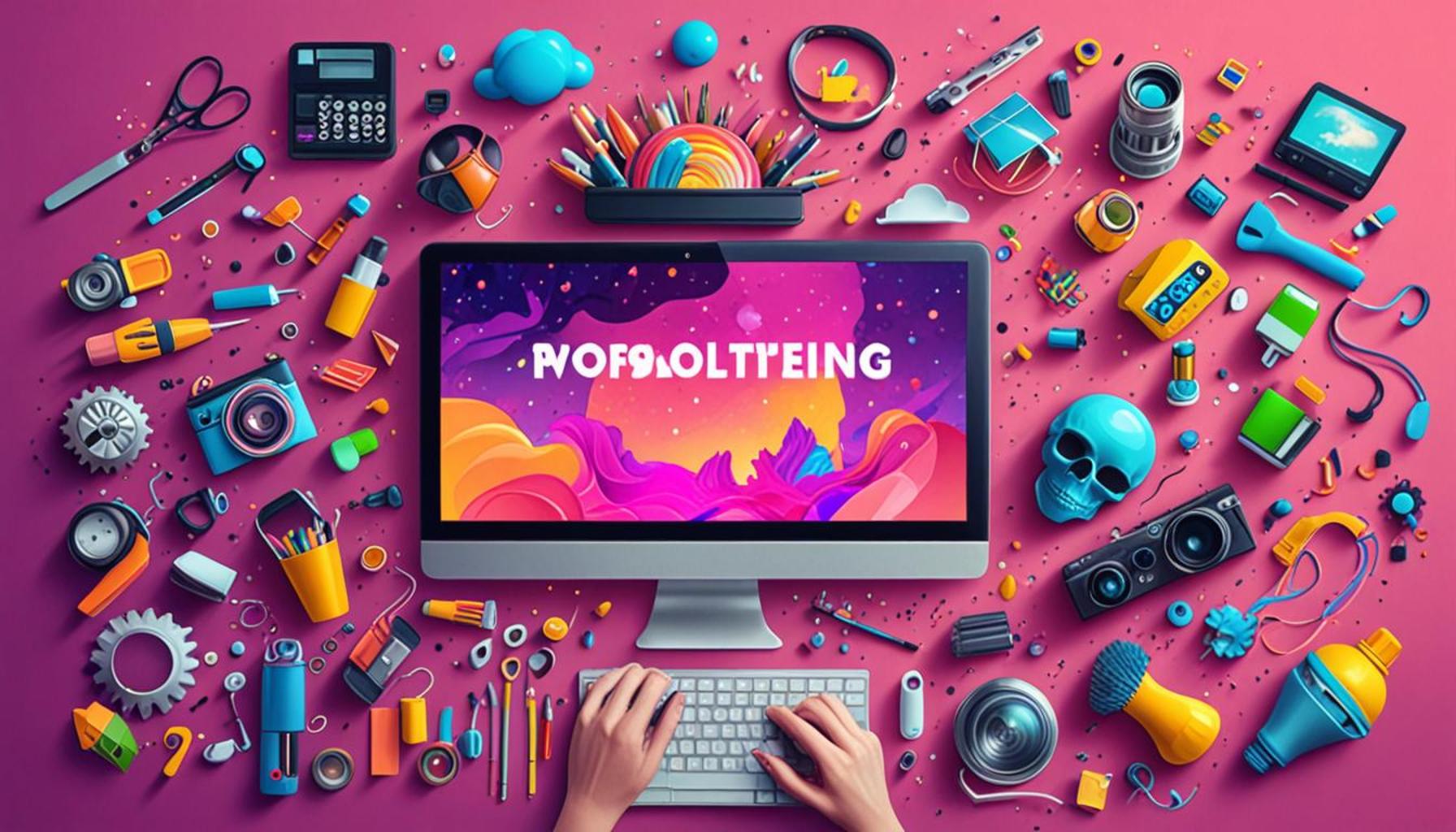Integration of Social Media Tools: How to Maximize Audience Engagement

Connecting with Your Audience
In today’s digital landscape, integrating social media tools is vital for any brand or business aiming to boost audience engagement. With over 4.5 billion social media users worldwide, the potential to enhance interaction with your target audience has never been greater. By leveraging the right platforms, you can create a dynamic experience that captivates and retains your followers.
Why Integration Matters
Seamless integration of social media tools allows brands to:
- Streamline communication across multiple platforms.
- Enhance user experience through cohesive design and messaging.
- Collect valuable data to better understand audience preferences.
Utilizing powerful social media tools not only maximizes engagement but also amplifies your reach. Brands can explore various platforms like Facebook, Instagram, Twitter, and TikTok to convey their messages in diverse formats. For instance, a small business could showcase its products with eye-catching images on Instagram while simultaneously hosting engaging live Q&A sessions on Facebook, encouraging real-time interaction with potential customers.
Engagement Strategies
To further maximize audience engagement, consider implementing:
- Targeted advertising that aligns with user interests. By utilizing data analytics, brands can create ads tailored to specific demographics, ensuring the right audience sees them.
- Interactive content, such as polls and live Q&As. These methods not only make your audience feel involved but also provide you with immediate feedback and insights into their preferences.
- Consistent posting schedules tailored to audience activity. Understanding when your audience is most active can significantly boost visibility and interaction with your posts.
The importance of consistent engagement cannot be overstated. A 2021 study found that brands that engage with their audience consistently can boost their liked and shared content by up to 80%. This level of engagement fosters community and loyalty, encouraging your audience to become brand advocates. As we delve deeper into this topic, you will discover innovative methods and effective strategies to harness the power of social media tools for increased engagement.
Moreover, brands must not overlook the power of user-generated content. Encouraging your audience to share their experiences with your products or services not only enhances authenticity but also spreads your message organically across diverse networks. This approach has been effectively adopted by various brands in the United States, demonstrating how social media can transform traditional marketing into a more interactive and engaging experience.
CHECK OUT: Click here to explore more
Exploring Effective Engagement Techniques
As we navigate the myriad ways to achieve audience engagement, it’s essential to pinpoint specific techniques that can yield substantial results. In an age where content is abundant and attention spans are short, how brands interact with their audience requires innovation and creativity. Here, we delve into strategies to maximize impact through the integration of social media tools.
Leveraging Multiple Platforms
Different social media platforms cater to varied demographics and user behaviors. By integrating social media tools, brands can fluidly transition their messages across platforms, adapting content to fit each environment’s unique characteristics. For instance, Instagram thrives on visual storytelling, making it a prime choice for brands focusing on aesthetics. In contrast, Twitter’s character limit fosters succinct messaging that encourages quick interactions.
Brands can enhance their integrative strategies by:
- Cross-posting content to maintain a cohesive brand voice while tailoring the message slightly for each audience segment.
- Creating platform-specific campaigns that utilize the strengths of each, like Instagram stories for quick promotions, while using Facebook for in-depth discussions.
- Utilizing analytical tools to monitor performance across different platforms, allowing brands to pivot their tactics based on real-time data.
Understanding how to utilize these multiple platforms not only amplifies reach but also ensures that brands connect with users in their preferred digital spaces. Research indicates that companies who engage on multiple platforms experience a 75% higher engagement level than those who focus solely on one.
Building Community Through Engagement
Incorporating interactive features into social media strategies can significantly boost participation and engagement. This can range from utilizing polls on platforms like Instagram to sparking conversations through comment sections on Facebook posts. Such interactions not only capture attention but also create a sense of community among followers. According to a study by Sprout Social, 65% of respondents feel more connected to brands that engage with them directly.
Furthermore, brands can consider:
- Live streaming events to create real-time engagement, fostering an environment of shared experiences.
- Contests and giveaways that encourage participation and sharing, ultimately expanding brand visibility.
- Feedback mechanisms, allowing audiences to voice their opinions on products and services, making them feel valued.
These techniques solidify a brand’s relationship with its audience, creating loyal followers who are more likely to support the brand through purchases and recommendations. As you implement these strategies, remember that authentic connections go beyond mere transactions; they foster long-term relationships essential for sustained success in digital marketing.
| Feature | Impact |
|---|---|
| Real-Time Interaction | Enhances responsiveness and builds community rapport. |
| Content Sharing | Facilitates broader audience reach and encourages user-generated content. |
| Analytics Integration | Provides insights into audience behavior and content effectiveness. |
| Cross-Platform Promotion | Maximizes visibility across diverse platforms, increasing engagement opportunities. |
The integration of social media tools into your marketing strategy significantly boosts audience engagement. Leveraging features like real-time interaction allows brands to respond promptly to customer inquiries, fostering trust and rapport within the community. Additionally, through content sharing, users become active participants by generating their own content related to your brand, which not only amplifies your message but encourages a deeper relationship with your audience.Moreover, applying analytics integration aids marketers in assessing audience behavior and content effectiveness, enabling them to refine strategies dynamically. This data-driven approach is crucial for adapting content to meet evolving audience preferences. Lastly, cross-platform promotion ensures that your brand resonates across varied channels, maximizing exposure and creating myriad opportunities for potential engagement. By incorporating these social media tools effectively, organizations can amplify their outreach, ensuring that their messages remain impactful and relevant.
LEARN MORE: This related article may interest you
Innovative Content Strategies for Enhanced Engagement
Content is the cornerstone of audience engagement, and by integrating social media tools, brands can craft compelling narratives that resonate with their target audience. The quest for innovation in content strategy not only distinguishes a brand but creates deeper connections with followers. Adopting diverse content formats can significantly enhance user interaction and foster loyalty.
Utilizing Video Content
Video content has become a dominant force in digital marketing, with platforms like YouTube and TikTok gaining immense popularity. According to a report from Cisco, by 2022, video content is expected to make up more than 82% of all consumer internet traffic. Brands that incorporate video into their social media strategies can experience higher engagement levels, with users more likely to share video posts than any other type of content.
Some effective ways to leverage video include:
- Tutorials and How-To videos that educate consumers about products or services, strengthening brand authority.
- Behind-the-Scenes content that offers transparency and builds trust by showcasing company culture and processes.
- Short-form videos that capture attention quickly on platforms such as Instagram Reels or Snapchat Stories, driving interaction through easily digestible content.
By blending cinematic storytelling with succinct messaging, brands can create an emotional connection, inciting viewers to like, share, and engage.
Incorporating User-Generated Content
User-generated content (UGC) provides brands with organic, authentic endorsements that can dramatically enhance engagement. By encouraging customers to share their experiences, brands not only generate fresh content but also cultivate community sentiments. Research indicates that UGC is four times more likely to be trusted compared to brand-generated content.
Brands can incorporate UGC effectively by:
- Creating branded hashtags that encourage followers to share their photos or videos featuring the brand’s products.
- Reposting customer experiences on their own channels, highlighting the community aspect and fostering a sense of belonging.
- Engaging in contests or campaigns that incentivize customers to submit content, driving both interaction and reach.
By actively involving customers in the content creation process, brands not only enhance engagement but also develop a loyal customer base willing to advocate for the brand.
Strategic Use of Social Listening Tools
In today’s data-driven world, leveraging social listening tools can offer invaluable insights into audience preferences and behaviors. Brands can monitor conversations and trends relevant to their industry, gaining feedback that can shape content strategies and improve engagement. Platforms like Hootsuite and Brandwatch allow companies to track mentions, hashtags, and sentiment analysis, enabling them to respond in real-time.
Brands can maximize the advantages of social listening by:
- Identifying trending topics that resonate with their audience, allowing for timely content creation.
- Engaging proactively with consumers by addressing questions, concerns, or feedback, reinforcing community connections.
- Adapting campaigns based on audience sentiment, ensuring that brand messaging aligns with consumer expectations and reactions.
By employing these social listening strategies, brands can remain relevant and responsive, further enhancing audience engagement in an ever-evolving digital landscape.
CHECK OUT: Click here to explore more
Conclusion: Embracing the Future of Audience Engagement
As we have explored throughout this article, the integration of social media tools is pivotal in maximizing audience engagement. In a landscape where consumer attention is increasingly fleeting, brands must leverage innovative content strategies, such as video and user-generated content, to capture the interests of their target demographics. The rise of video content, which is projected to comprise over 82% of all consumer internet traffic, underscores its importance in crafting relatable narratives that drive interaction.
Moreover, fostering community through user-generated content not only amplifies brand reach but cultivates a sense of belonging among followers. Incorporating strategic social listening tools further enhances these efforts by enabling brands to respond dynamically to audience sentiments and trends, ensuring relevancy in a rapidly changing digital environment.
As businesses continue to navigate the complexities of social media, it is essential to remain agile, continuously adapting strategies based on audience insights. Embracing these techniques will not only enhance user interactions but also deepen the emotional connections between brands and consumers. In a world driven by authentic experiences and instantaneous communication, the effective integration of social media tools stands as a crucial pathway to creating and maintaining a loyal audience base. Moving forward, brands must prioritize creativity, flexibility, and engagement-driven tactics to thrive in this evolving landscape.
In conclusion, the future of audience engagement lies in understanding and utilizing the rich array of social media tools at our disposal. By adopting innovative strategies and remaining attuned to audience feedback, brands can create impactful connections that foster community and drive sustained engagement.

